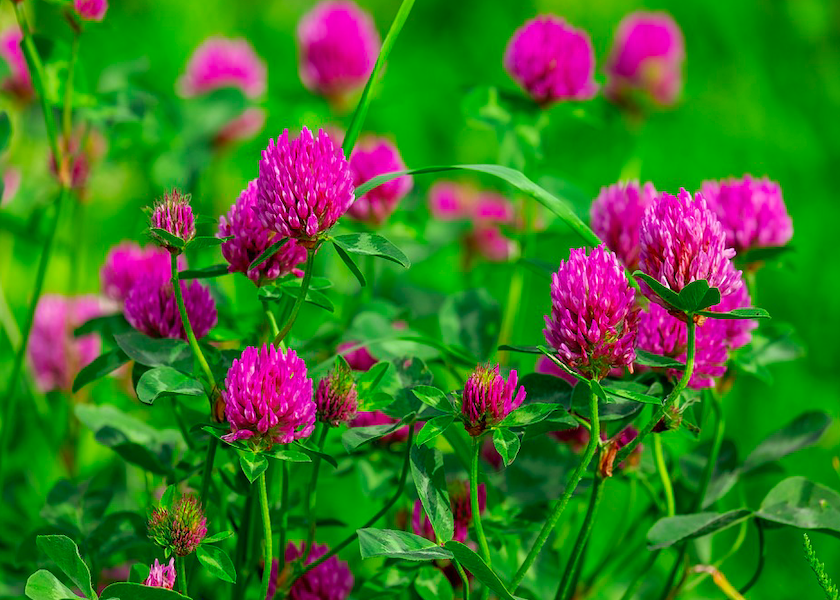The Basics of Frost Seeding Clover

Legumes are an essential part of a strong and healthy pasture ecosystem. Legumes form a symbiotic relationship with Rhizobium bacteria in which the bacteria fix nitrogen (N) from the air into a plant available form. Legumes, such as clovers, may be used in much of central and eastern Oklahoma as a means of extending the length of grazing season, increasing the nutritional plane of grazing livestock, reducing the amount of N fertilizer required in a forage production program and/or limiting the effect of fescue toxicosis.
There are several techniques for introducing or reintroducing clover into pastures including no-till seeding, minimum tillage, and frost seeding. Of these techniques, frost seeding requires the least amount of equipment and is the simplest to implement. Frost seeding is accomplished by broadcasting clover seed onto existing pastures or hayfields late winter – early spring and allowing the freezing and thawing cycles to incorporate the seed into the soil. Frost seeding is not foolproof but will normally succeed if moisture is favorable for establishment, insect populations have been reduced by frosts, and pastures are closely grazed prior to seeding to minimize grass competition.
Here are a few tips to ensure the best chance of getting clover established from a frost-seeding. This method works best with crimson, red and white/ladino clover. It is NOT recommended for alfalfa.
- Address soil fertility needs. Get a current soil test and apply the needed nutrients. Clovers need a soil pH of 6.5 to 7 and adequate or better levels of phosphorus and potassium. Do not apply additional N except for that supplied from diammonium phosphate (DAP) if used to supply the needed P. But get the soil tested; anything else is just a guess.
- Select a good variety. Choose an improved variety with known performance and genetics. Choosing a better red or white/ladino clover variety can mean additional hay tonnage, improved forage quality and longer stand life. Spread enough seed. Oklahoma State University Fact sheet PSS-2585, Forage Legumes for Oklahoma, recommends broadcast seeding rates of 6 to 8 pounds for crimson and red clover and 3 to 4 pounds per acre for white/ladino clover. If mixing the red and white clover when seeding, apply the minimum seeding rate of red clover (6 lb./A) mixed with 1 lb./A of white/ladino clover. This will put over 50 seeds per square foot on the pasture (about 37 red and 18 white).
- Make sure seed lands on bare soil. Excess grass or thatch must be grazed and/or disturbed until there is some bare ground showing prior to overseeding. The biggest cause of seeding failure with frost seedings is too much ground cover. Judicious cattle traffic or dragging with a chain harrow can accomplish this.
- Get good soil-seed contact. With frost seeding, we are depending on the rain and snow or freeze-thaw action of the soil surface to work the clover seed into the top ¼ inch of soil. A corrugated roller can also be used soon after seeding to ensure good soil contact.
5) Control competition next spring. Do not apply additional N on overseeded fields next spring and be prepared to do some timely mowing if grass or spring weeds get up above the clover. Clover is an aggressive seeding but will establish faster and thicker if grass and weed competition is controlled.







